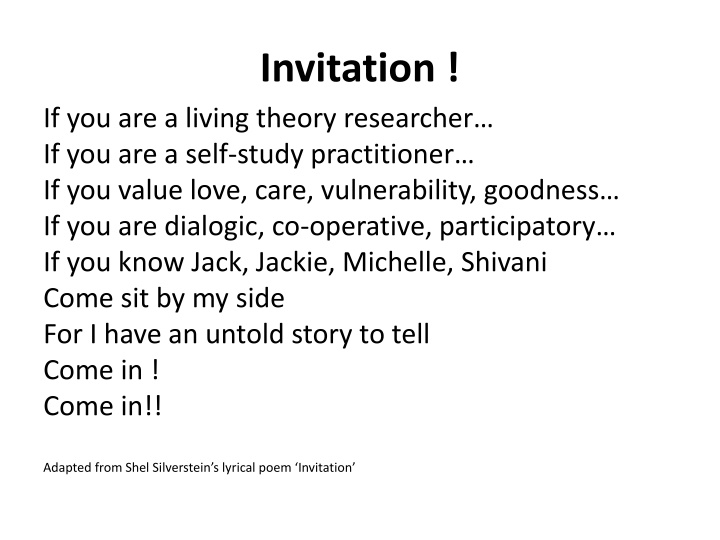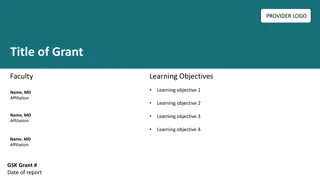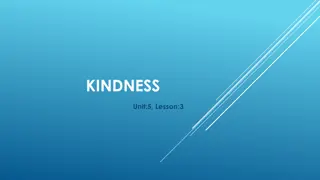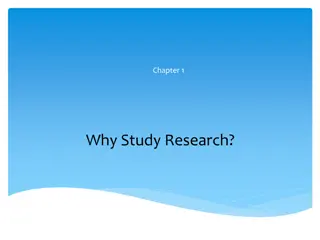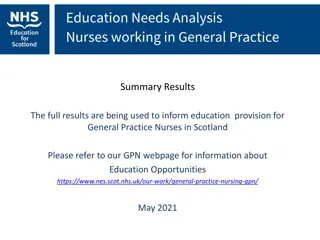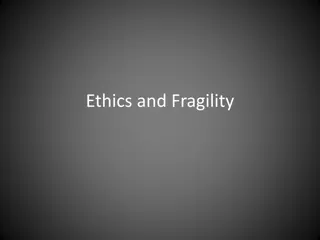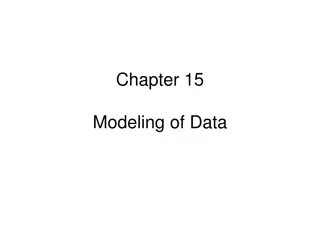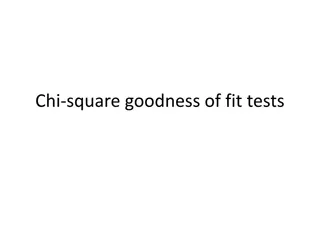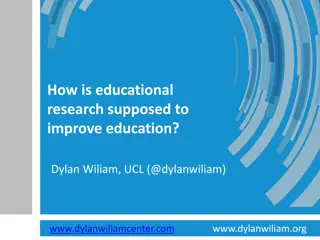Embracing Satva: Enhancing Goodness in Educational Practice
Embrace the concept of Satva to enhance goodness among facilitators and students in university classrooms. Accept educational responsibility and create a mutual learning environment that promotes common good through living educational theory and love.
Download Presentation

Please find below an Image/Link to download the presentation.
The content on the website is provided AS IS for your information and personal use only. It may not be sold, licensed, or shared on other websites without obtaining consent from the author.If you encounter any issues during the download, it is possible that the publisher has removed the file from their server.
You are allowed to download the files provided on this website for personal or commercial use, subject to the condition that they are used lawfully. All files are the property of their respective owners.
The content on the website is provided AS IS for your information and personal use only. It may not be sold, licensed, or shared on other websites without obtaining consent from the author.
E N D
Presentation Transcript
Invitation ! If you are a living theory researcher If you are a self-study practitioner If you value love, care, vulnerability, goodness If you are dialogic, co-operative, participatory If you know Jack, Jackie, Michelle, Shivani Come sit by my side For I have an untold story to tell Come in ! Come in!! Adapted from Shel Silverstein s lyrical poem Invitation
My untold story Good to greater good
We influenced each other! Joy Dialogue Care Vulnerability
Accepting educational responsibility by living common educational values: A satvic framework Parbati Dhungana April 10, 2021
We made a difference! Then Accepting Educational Responsibility: Breaking hegemony of measurability over mutuality Nepal Now Accepting educational responsibility by living common educational values: A satvic framework R.Q. How can I create a mutual learning environment in my university class? R. Q. How did I enhance goodness among facilitator/s and students of the graduate students?
Issue of my research Passion for teaching, learning and assessing culture seems insufficient to promote satva (goodness) among facilitators and students particularly in the university classrooms. According to the Eastern Wisdom Tradition, unlike tamasic (ignorant) and rajasic (passionate) people, satvic (good) people work for the common good.
3 Human attributes The Bhagavad Gita (14:5) Satva goodness Liberation Tamas Rajas (ignorance) (passion)
Purposes To enhance goodness among facilitators and students. To accept educational responsibility in the university classroom context.
Theoretical referent The use of my own living-educational-theory, living love , supported me to explore the notion of satva as the highest form of knowledge acquisition that holds the potentiality of accepting educational responsibility and thereby influencing me, my colleagues, students, and the university culture.
Methods Self-study methodology A participatory action research design Dialogue method Reflective journals, presentations, assignments, and Blog writing Multimedia, SKYPE, and Zoom
Findings: A Satvic framework A cluster of context-responsive approaches in the form of a satvic framework The cluster includes (1) voluntary participation, (2) valuing an (everyday) sense of wonderment, (3) respecting interdependence, (4) enhancing the culture of inquiry (Delong, 2013), and (5) adopting aesthetic/s inquiry.
Conclusion Ignorance as vulnerability (a living value) We may be the worst in one point of time but we can improve ourselves and make journey through tamas-rajas-satva being observant of our own attributes within the culture of inquiry The journey from tamas to rajas to satva is not a linear but a cyclical process. I added another meaning to my living- educational-value, living love that is interconnectedness.
Significance Vulnerability exerts living values like a moon on the tides and thereby develops a sense of interconnectedness in the local and global contexts. Sustaining living-educational theory through shared space and values (transdisicplinary project; love, care and vulnerability) Living-educational-theory praxis deepens living values as I added another meaning to living love i.e. interconnectedness.
How we influenced each other Delong: It seems we all are on our spiritual journey! While I have mentored Parbati, we have learned together to understand cultural differences, to make explicit our values as explanatory principles and the nature of cultures of inquiry. Shivani: I was influenced by the way you put your loving and caring heart in flourishing humanity. I was inspired by your hard work and determination of disseminating your learning through writing. Michelle: The presence of vulnerability within my relationships forms a foundation in which I create a space for sharing and model open dialogue for my students. Reading Parbati s definition of vulnerability as a synonym to the tamas attribute of ignorance created synaptic connections for me and allowed me to see the correlations in my own experiences in higher education between expressions of vulnerability and perceived weakness. Our discussions allow me to see my values from a new perspective and this has been a key avenue for personal growth Jack: Parbati Dhungana s shared her values that are grounded in her satvic framework with her focus on the attainment of goodness as the highest human attribute, form or state. Parbati Dhungana takes social responsibility and works for the common good within her Nepalise and global contexts. Accepting educational responsibility by living common educational values: A satvic framework
